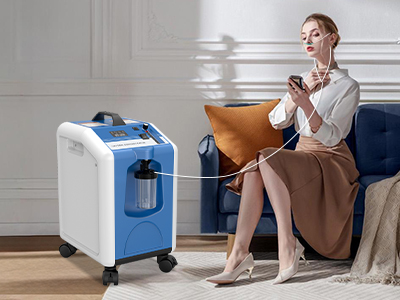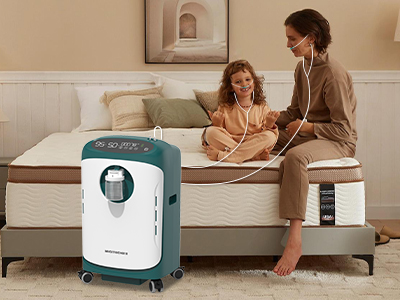16 Jun 2025
Oxygen may be free in the air, but the moment you need it piped into your living room, it becomes an exclusive, high-maintenance guest. Home oxygen therapy is a blessing wrapped in medical tubing and clinical beeping—but beneath the surface lies a sneaky little maze of costs, both visible and sneakily lurking in the shadows.
Sure, your doctor prescribes it and insurance might swoop in to save the day (partially), but once that machine hums to life in your hallway, the register starts cha-chinging. Let's dissect this breath-by-breath budget buster.

Equipment Expenses: More Than Just a Machine
You thought you were just getting a tank or a concentrator? Oh, sweet summer child. The world of oxygen therapy equipment is vast, varied, and just a little bit villainous when it comes to price tags.
Concentrators: These electric machines draw in air, strip out nitrogen, and deliver concentrated oxygen. They’re the dependable workhorses of home therapy—and can cost between $500 to $3,000. That’s before you even accessorize.
Portable Units: Convenience comes with a hefty price tag. These lightweight, battery-operated models can run you upwards of $2,500, not including backup batteries (cha-ching).
Tanks & Refills: The old-school oxygen cylinders might look more affordable upfront, but frequent refills can quietly drain your wallet faster than a toddler with a juice box.
And then there’s the "supporting cast"—nasal cannulas, oxygen masks, humidifier bottles, extension tubing, regulators, carts, wall mounts. These are the shoelaces and buttons of oxygen therapy—easy to overlook, impossible to do without.
Energy Bills That Breathe Heavy
Oxygen concentrators don’t just sit there—they hum, buzz, and slurp electricity like a late-night gamer on an energy drink binge.
24/7 Usage: Many users require continuous oxygen, which means your concentrator is running 24 hours a day. That’s not a machine; that’s a full-time employee demanding overtime pay—in kilowatt-hours.
Monthly Power Costs: Depending on your local energy rates, running a concentrator could tack on an extra $30–$100 to your monthly electricity bill. It’s not going to bankrupt you, but it will certainly make your power meter spin like a vinyl record at a house party.
For bonus stress, throw in the cost of backup batteries or generators for power outages—because oxygen therapy doesn’t take breaks, even when your grid does.
Maintenance and Replacement: Because Nothing Lasts Forever
Your concentrator might feel like a forever friend, but sadly, medical equipment ages like milk—not wine.
Filter Replacements: Most concentrators require weekly cleaning and monthly filter changes. Filters aren’t expensive individually, but over time they start to accumulate like socks in a laundry basket—quietly, consistently, and annoyingly.
Humidifier Bottles: These need replacing every few weeks if you’re using humidified oxygen. Tap water doesn’t cut it—you’ll need sterile water, which adds to the grocery list.
Professional Servicing: Units should be inspected and serviced regularly to keep them functioning at peak performance. This can cost anywhere from $100–$300 a pop, depending on the model and your provider’s level of helpfulness (or greed).
And let’s not forget: warranties eventually expire, and Murphy’s Law says your machine will die one week after.
Insurance Intricacies: A Labyrinth of Loopholes
Health insurance often covers oxygen therapy—but the fine print could induce migraines.
Coverage Gaps: Many plans only cover rentals, not outright purchases. Others require endless paperwork, prior authorizations, or a doctor’s dissertation on why your lungs aren’t doing their job.
Co-Pays and Deductibles: Even when covered, you’ll likely still be on the hook for 10–30% of the cost. That sounds okay until you realize you’re paying 30% of $3,000. Surprise! That’s a vacation to Hawaii. But instead of mai tais, you get a nasal cannula.
Replacement Limitations: Some insurers will only replace tubing, masks, or humidifiers once every few months—even if your kid has turned them into a chew toy after week one.
So yes, your insurance is helping. But it’s not Santa Claus. It comes with strings, disclaimers, and some soul-sapping hold music.

Home Modifications: Rearranging Your Reality
When oxygen therapy becomes part of your daily life, your home transforms—often involuntarily.
Fire Safety Upgrades: Fire extinguishers, smoke detectors, “Oxygen in Use” signs—these are all essentials now. Some folks even install spark-proof outlets or replace gas stoves with electric ones.
Furniture Rearrangement: That comfy recliner may need to shift six inches to the left. Your wall décor might make way for tubing tracks. Minimalism becomes less of a style choice, more of a logistical necessity.
Accessibility Tweaks: If the user has limited mobility, expect to invest in rolling carts, bed rails, or even home ramps to ease movement while connected to tubing.
In short, your space evolves—from cozy nest to medical-adjacent haven.
Emotional and Lifestyle Costs: The Price You Don’t See on the Receipt
Ah, the hidden-est of the hidden costs—your mental bandwidth and emotional fuel.
Noise Pollution: Concentrators aren’t exactly whisper-quiet. It’s like sleeping next to a light industrial appliance. Goodbye, silence. Hello, white noise soundtrack.
Mobility Limitations: Even with portable units, tubing tangles and battery anxiety are real. Suddenly, your spontaneous trip to the grocery store feels like planning a moon landing.
Social Impact: Hosting friends? Going on vacation? Spontaneity takes a backseat to logistics. Oxygen therapy makes you rethink everything from dinner parties to travel dreams.
This category doesn’t come with a price tag—but the mental toll adds up. Constant vigilance and adaptation can wear thin, even for the most seasoned caregivers or zen-like patients.
Keywords: oxygen therapy
Originally published 16 Jun 2025, updated 16 Jun 2025.